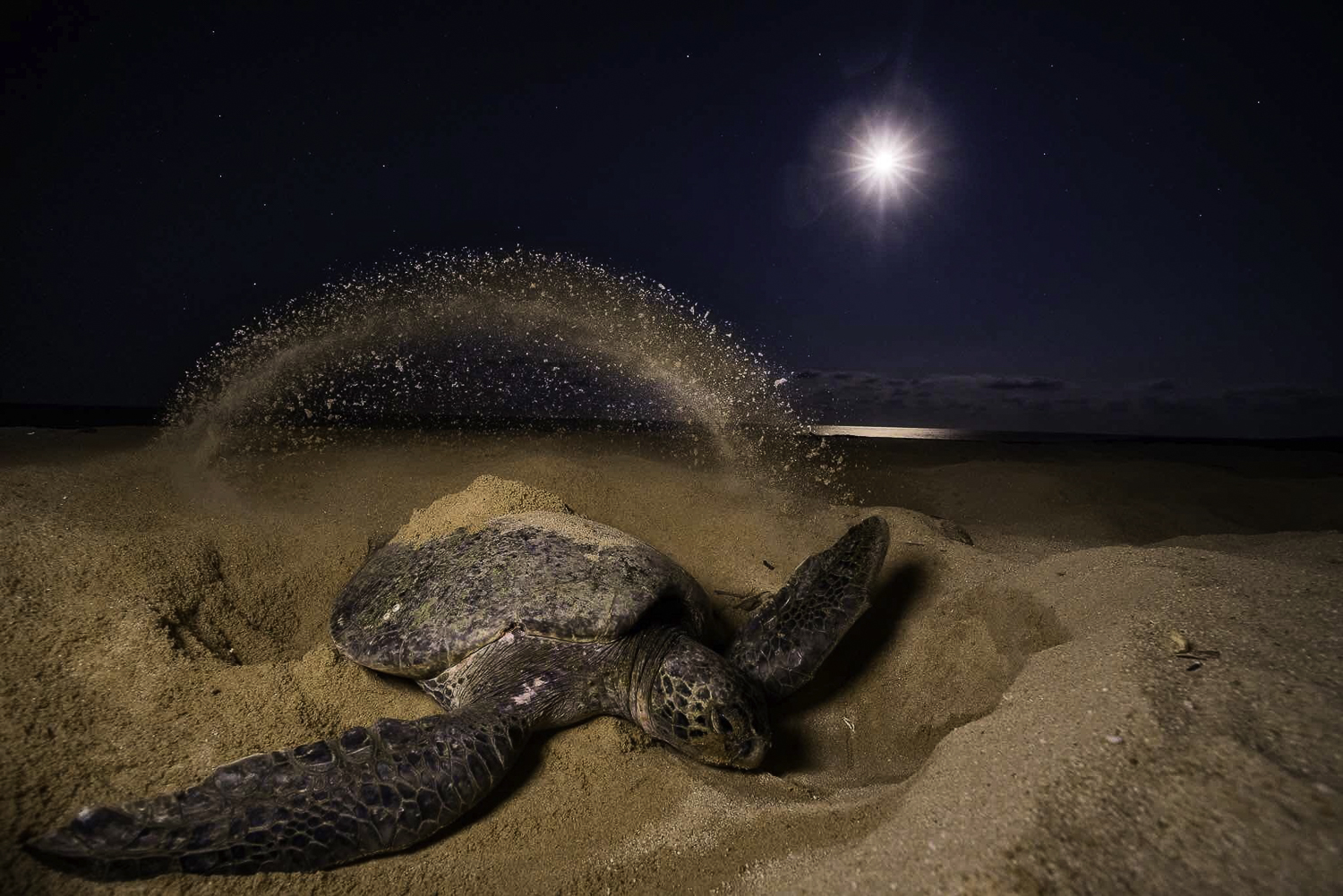Are Sea Turtles Likely to Hatch at Full Moon

The moon has long been a source of fascination and myth. Many cultures have stories and beliefs about the moon’s power, particularly its ability to affect the natural world. One popular belief is that certain animals, including sea turtles, are more likely to hatch during a full moon.
While there is no scientific evidence to support this claim, it is an interesting idea worth exploring.
It’s a popular belief that sea turtles hatch at full moon, but is there any truth to it?There are actually several reasons why this belief exists. For one, it’s easier to see the turtles when they’re hatching under a bright moon.
And secondly, the tides are usually higher during a full moon, making it easier for the baby turtles to make their way into the water.However, studies have shown that there is no correlation between turtle hatching and the phase of the moon. So whether you see them at a full moon or not, rest assured that these amazing creatures will continue to astound us with their mystery and beauty.
Sea Turtles hatching under a full moon
Why Do Sea Turtles Hatch at Night
Why Do Sea Turtles Hatch at Night?Most people are familiar with the image of a mother turtle crawling up on the beach, digging a hole, and laying her eggs. What many people don’t know is that turtles almost always hatch at night.
There are several reasons for this.One reason is that it’s cooler at night. The sand stays cooler longer, which is important because the temperature of the sand can affect the sex of the turtles.
Cooler temperatures produce more female turtles while warmer temperatures produce more males.Another reason is that there are fewer predators around at night. Birds and other animals that might eat turtle eggs or hatchlings are less active after dark, so the babies have a better chance of surviving if they hatch then.
Finally, hatching at night gives the turtles an immediate head start on their journey to the sea. If they hatched during the day, they would be visible to predators and easier to catch. By hatching at night, they have a better chance of making it safely into the water where they can start their lives.
.
Do Turtles Hatch at Night
Most turtles will hatch at night. The process usually takes about two hours, and the female turtle will help to excavate her young from the eggshells using her hind feet. She then carefully carries them to the water using her mouth or front legs.
Once in the water, the hatchlings swim towards the surface and begin their independent life.
Do Turtles Follow the Moon
There are many superstitions and old wives tales about the moon and its effects on animals. One of these is that turtles will only come out to lay their eggs during a full moon. While there is no scientific evidence to support this claim, it is true that turtles are more active at night, so it’s possible that they may be more likely to emerge during a full moon.
If you’re hoping to see some turtles on your next beach trip, keep an eye out during the nights of a full moon. You might just get lucky and spot one or two!
How Long Does It Take for Sea Turtle Eggs to Hatch
It takes anywhere from 45 to 70 days for a sea turtle’s eggs to hatch, depending on the species. The sex of the hatchlings is also determined by the temperature of the sand in which they are incubated; warmer temperatures produce more females, while cooler temperatures result in more males.

Credit: www.cloudridge.org
Do Turtles Need a Full Moon to Hatch?
No, turtles do not need a full moon to hatch. The timing of turtle hatching is dictated by the temperature of the sand in which they are incubating. When the sand reaches a certain temperature, usually around 80 degrees Fahrenheit, the turtles will start to hatch.
Do Sea Turtles Lay Eggs on Full Moon?
There are many myths and legends about the moon’s influence on animals, including the belief that sea turtles lay their eggs on full moons. However, there is no scientific evidence to support this claim. Sea turtles actually nest during the daytime, when the sand is warm and the predators that could eat their eggs are less active.
The tides also play a role in nesting; many species of sea turtle will only lay their eggs during high tide. So while the moon may be beautiful to look at, it doesn’t seem to have any impact on when these amazing creatures choose to lay their eggs.
How Does the Moon Affect Sea Turtles?
The moon has a significant impact on sea turtles. The lunar cycle affects the turtles’ reproductive habits, as well as their feeding and migratory patterns.During the full and new moon phases, the tides are at their highest and lowest points, respectively.
These extreme tidal changes can disorient sea turtles, making it difficult for them to find their way back to shore. Additionally, the strong currents created by these tides can sweep away turtle eggs that have been laid on the beach.The light of the moon also affects sea turtles.
hatchlings are drawn towards the brightest object on the horizon, which is often the Moon. This can lead them away from safety and into danger. For example, they may be lured into busy roads or predators may spot them more easily in open areas.
Does the Full Moon Affect the Endangered Hawksbill Sea Turtles’ Hatching Patterns?
The hawksbill sea turtle endangerment is a pressing concern, and researchers have delved deep into studying their hatching patterns. However, current evidence suggests that the full moon does not significantly impact the hatching patterns of these endangered turtles. Factors like temperature, moisture, and beach erosion are believed to play a more influential role in determining the survival rates of hawksbill sea turtles.
What is the Best Time of Night to See Sea Turtles Hatch?
If you want to see sea turtles hatch, the best time of night to go is about two hours after sunset. This is because the turtles usually come up to the surface to breathe around this time, and they often lay their eggs on the beach at night.
Conclusion
A new study has found that sea turtles are more likely to hatch during a full moon. The research, which was conducted by the University of Central Florida, looked at data from over 30 years worth of turtle nests on beaches in Florida.The study found that there is a significantly higher chance of hatching during a full moon than any other time during the lunar cycle.
The researchers believe that this may be because the high tides associated with a full moon make it easier for the turtles to reach the water.